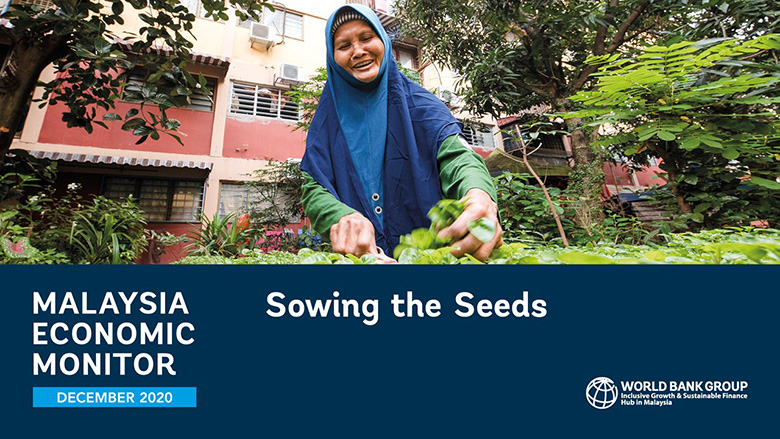The COVID-19 pandemic gave Malaysia it’s sharpest recession in twenty years. However, the easing of movement restrictions has helped boost economic recovery.
- The economy saw a smaller contraction of -2.7 percent in Q3 2020 compared to the -17.1 percent contraction it experienced in Q2 2020
- Income support measures boosted domestic demand with private consumption recording only a 2.1 percent contraction in Q3 2020 compared to the -18.5 percent in Q2 2020
- The gradual re-opening of the economy also helped ease unemployment which declined slightly to 4.7 percent in Q3 2020 from a 5.1 percent peak in Q2 2020. However, underemployment rates remain relatively high.
- Improving external demand also helped increase Malaysia’s exports as gross exports increased 4.4 percent in Q3 2020 compared to a 15.1 percent contraction in the previous quarter.
- Gross imports also improved recording a smaller decline of 6.3 percent in Q3 2020 against a 15.1 percent contraction in Q2 2020.
- This has considerably increased the current account surplus to 7.1 percent in Q3 2020 from 2.5 percent in Q2 2020. The conclusion of RCEP negotiations in November 2020 is also expected to support Malaysian exports in the coming years.
However, the economic downturn caused by the pandemic and responding stimulus packages come with a cost.
- The fiscal deficit is expected to widen to 6 percent of GDP in 2020 while federal government debt has increased to 60.7 percent of GDP
- Federal government revenue is expected to fall to 15.1 percent of GDP in 2021, straining the government’s ability to respond to future shocks and sustainably finance its longer-term inclusive growth agenda
In the year ahead, economic activity is expected to improve though a return to pre-pandemic levels remains only in the medium-term horizon
- The global economy is projected to grow 4.2 percent in 2021, with Malaysia projected to grow by 6.7 percent.
- This will be dependent on the timely availability and effectiveness of a mass COVID-19 vaccination program.
- Private consumption is expected to return to growth of 7.4 percent against a projected overall contraction of 4.8 percent in 2020.
- Exports will also see stronger growth of 8.9 percent in 2021, if future waves of COVID-19 infections are held back.
- Controlling outbreaks of COVID-19 and protecting the most vulnerable remain immediate priorities for the country
- Smart containment, large-scale testing and contact tracing need to be sustained to prevent a protracted downturn from the renewed outbreak.
- Incentivizing job creation, investments in growing sectors and promoting the upskilling and reskilling of workers should be expanded to enable new post-pandemic growth
- As the economy improves, fiscal buffers need rebuilding to counter future shocks and finance long-term growth.
Concerns of food security and supply amidst economic shutdowns in containing the pandemic have thrust the agricultural sector as a potential driver of sustainable long-term economy growth and shared prosperity.
- There is underexploited potential in serving the demands of a modern agrofood economy in Malaysia. The country’s policies have focused primarily on meeting self-sufficiency in rice, causing an increased reliance on exports for higher-value foods.
- Malaysian households spend three times more on fruits and vegetables and more than twice as much on bread and cereals compared to rice.
- Thus, a more encompassing view of food security, agricultural competitiveness and rural development is needed, beyond the focus on paddy production.
- Modernizing and diversifying this sector promises to boost incomes of rural households, which make up a majority of the country’s farmers.
